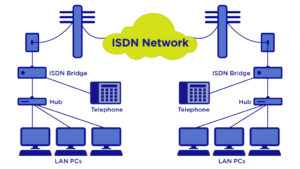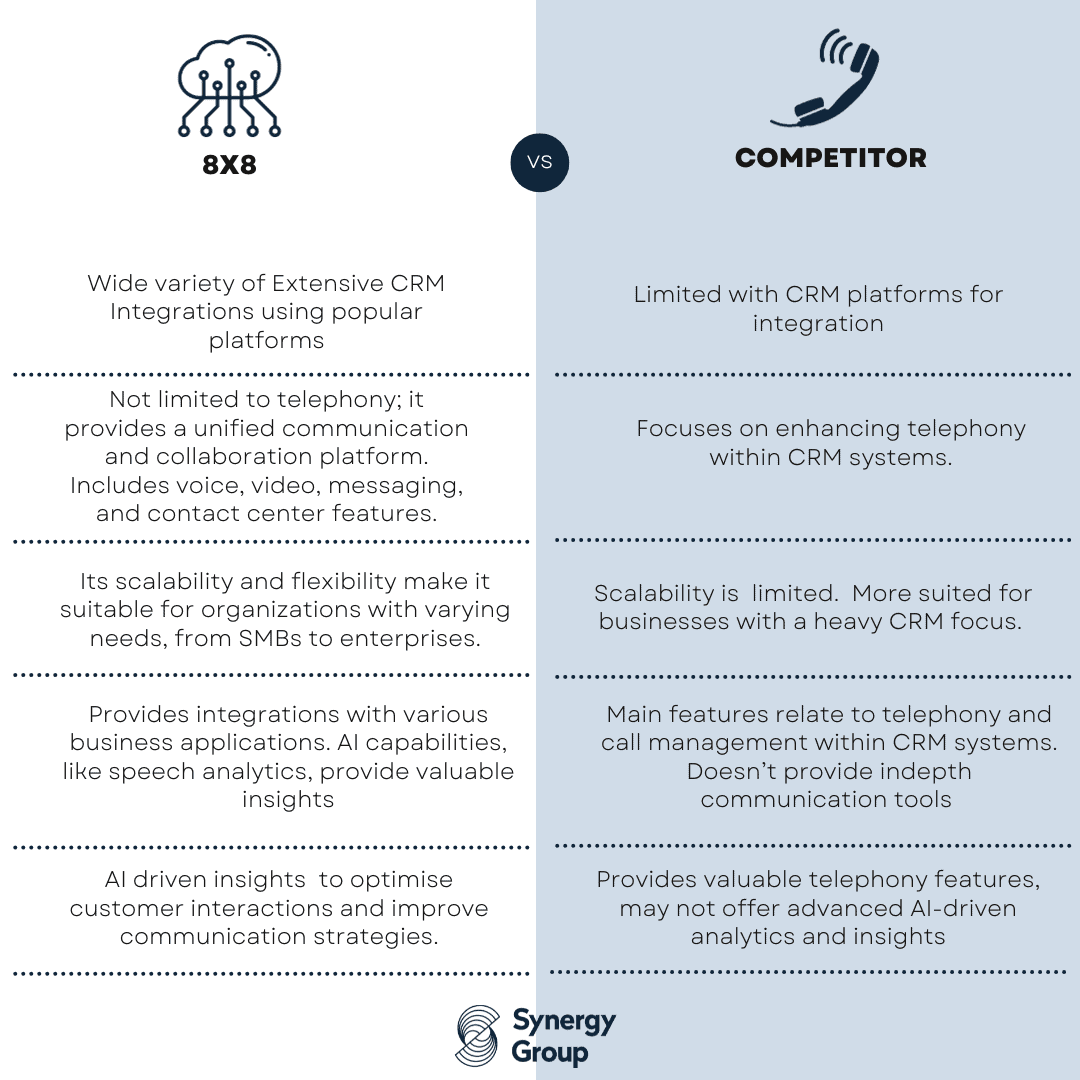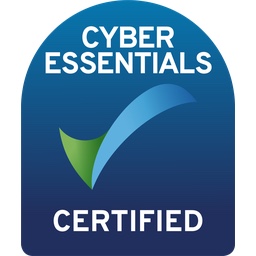As you may have heard, the current ISDN network will be switched off in 2025. This means that businesses of all sizes across the UK that are still using this technology will need to find an alternative way to manage their business communications.
While there are several possible solutions, many organisations are still unprepared for the ISDN switch-off. In this blog post, we discuss what you need to do to ensure your business is ready for the change.
What is ISDN and why is being switched off?
ISDN is an acronym for Integrated Services Digital Network, and it refers to a technology that allows digital data to be transmitted over standard telephone lines.
ISDN was a revolutionary way of communicating over phone lines, it was first introduced in the late 1980s, and it offers speeds that are up to 128 kbps for both voice calling as well data transfer rates – making this technology one of the fastest available during its period.

One of the main advantages of the ISDN was for digital Services, giving businesses more control over their communications with improved call quality and allowing them to use direct dialling services, presenting different phone numbers when dialling out and being able to identify callers.
With the evolution of broadband, offering higher speeds and a wider range of services, ISDN is no longer being developed as a technology, and its days are numbered; many BT exchanges in the UK will no longer accept new orders for additional channels and services, leaving many customers stuck and unable to expand their business.
The switch-off of the ISDN network is scheduled for 2025, and businesses need to start preparing for this now to avoid impacts on their communications.
How the ISDN Switch-off will affect businesses?
With the switch-off of ISDN, everything connected to the old phone network will stop working. That’s not exclusive to telephone systems, everything connected to this network, including non-voice services like alarms, EPOS machines and CCTVs will be offline. Therefore it is paramount to start planning the migration to avoid any downtime for your business.
Migrating from ISDN to VoIP
With the migration of the communication services to VoIP, there will also be a significant increase in the number of Internet-based calls that could lead to call quality issues for businesses that are not prepared for it. So having a contingent data plan with the capacity to support your business needs is critical.
Digital communications have transformed the way we live and work. By using the internet to make phone calls, send text messages and email, we can stay connected with colleagues no matter where we are in the world. And thanks to cloud telephony, businesses can now take advantage of a variety of Unified Communications solutions to be more efficient and productive.
Efficiency Benefits of VoIP
VoIP allows businesses to make and receive calls using the internet instead of a traditional phone line. This means that employees can work from home or adopt hybrid working models by simply having access to an internet connection, which gives businesses the flexibility to work from anywhere without impacting productivity.
This technology also offers many other advantages, such as lower call costs, scalability and enhanced features such as call recording and integration with cloud communication solutions, as well as business-critical applications such as CRMs.
The evolution of Unified Communications
Using the internet to manage communications allowed businesses to evolve from a simple voice-over IP technology to a more comprehensive solution allowing businesses to efficiently integrate communications with access to real-time data analytics and collaboration features to increase efficiency and improve the customer experience.
With Unified Communications, businesses can increase efficiency through real-time collaboration via voice, text and video conferencing solutions with the possibility to manage all communications in one place. This leads not only to an increase in efficiency but also can lead to cost reduction with a fully connected team.
To discover more about the power of Unified Communications, check this blog about The Importance of Unified Communications for Remote and Hybrid Workforces.
Costs
Cost is one of the most relevant factors for many businesses when deciding on the most suitable communication solution, and the first thing to consider when migrating from your communication system is to choose what is the best business communication system for your needs making sure it will fit your budget.
Choosing the right technology framework and having a reliable Telephony Partner is essential to define what is the best solution for your business. We will cover the two most common options, which are SIP Trunking and Hosted PBX.
What is SIP Trunking?
SIP Trunking is a VoIP service that uses the SIP protocol to connect to the PBX. SIP trunking offers many advantages for businesses, including lower calling costs, the ability to scale up or down as needed, and increased flexibility.
SIP trunking can also provide greater reliability than traditional PSTN lines and can be used with a variety of PBX systems. However, SIP trunking can also be complex to set up and manage, and it may not be compatible with all PBX systems.
As a result, businesses should carefully consider the advantages and disadvantages of SIP trunking before deciding whether or not it is the right solution for their needs.
This is a great choice for businesses looking to replace their ISDN circuits. Unlike PSTN and ISDN, SIP trunking offers a host of benefits that can help businesses save money and improve productivity. Some of the key benefits of SIP trunking include:
- Lower costs: SIP trunks are typically much cheaper than traditional phone lines, which can save businesses a lot of money in the long run.
- Flexibility and scalability: SIP trunking can easily scale up or down to meet the needs of your business, making it a very flexible option.
- Better features: SIP trunking offers a range of features that can improve productivity, communication and business continuity for your business.
What is a Hosted PBX?
A hosted PBX is a business telephone system that is hosted by an offsite third-party provider. (This solution is often referred to as Unified Communications or Cloud PBX as well). This means that the software and data for the system are stored remotely, rather than on-site. And there are several advantages to using a Hosted PBX or UC for your business.
Advantages of Hosted PBX
The first advantage is that a Hosted PBX (or Cloud PBX) is always up-to-date. Since the software and data are hosted in the cloud, they are constantly updated with the latest features and fixes. This eliminates the need for you to worry about keeping your system up-to-date internally.
With Research and Development budgets in the $100m annually you also avail your business of the latest releases of enhanced services at a click of a button, such as AI, Integration and Analytics.
Another advantage of a Hosted PBX is that it is highly scalable. This means that you can add or remove users as needed, without having to purchase new hardware or make changes to your existing phone system, giving your business the flexibility to adapt rapidly no matter what.
A Hosted PBX also offers work flexibility and mobility for your team. With a Hosted PBX, employees can work from anywhere they have an internet connection. This allows them to take their phone extension with them wherever they go. Additionally, a Hosted PBX can be accessed from any device, including smartphones and tablets.
Because it is hosted remotely, there are lower infrastructure or maintenance fees. You simply pay for the number of user’s licenses with the features each user will benefit from, plus the data connection you use. This can save your business money compared to traditional phone systems depending on your business needs.
What is the best communication solution for your business?
Both communication platforms have their own advantages and disadvantages, so it’s important to understand both options to choose the right communication system for your business.
Hosted PBX systems are easier to set up and manage and more scalable since you can add or remove users as needed, along with the latest features for those that will benefit from them for as long as they need them. They’re also generally more affordable than on-premises systems and are a great solution for small businesses.
It’s important to keep in mind that the benefits of each solution can vary depending on your business needs.
If you have a large number of extensions users, a reduced amount of ISDN channels and a telephony system that is not at the end of life, you may wish to keep costs to a minimum and replace ISDN with SIP Trunks as a first step, with a Unified Communications solution being the end goal. If you have users in multiple locations, an end-of-life phone system and want to work with the latest features – you should go straight to Unified Communications.
That’s why is important to speak with a reliable Telephony partner to make sure you choose the right solution for your needs.
SynergyGroup can support your business with the best telephony solutions based on your profile, helping your business to reduce costs, increase efficiency, and improve business continuity. Discover more by speaking with one of our friendly engineers.
Conclusion
The switch-off of the ISDN network is a major change that businesses need to start acting now. There are some things they can do to prepare, such as evaluating their telephony needs and researching alternative technologies.
If you would like help preparing your business for this change, please contact us to discover more about migrating your business communication solution. We have 20+ years of experience helping organisations just like yours to efficiently manage their business communications and we would be happy to assist you in any way we can.





















